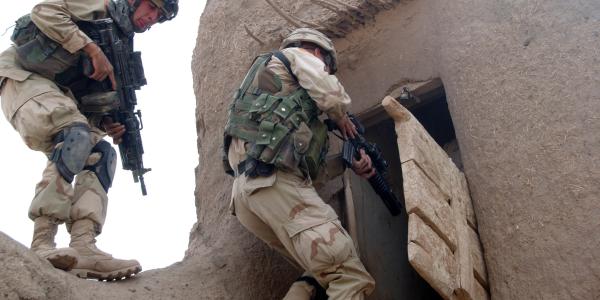Assistant professor of political science Carly Wayne discusses the role anger plays in public attitudes about counterterrorism.
Carly Wayne's research focuses on the intersection of international relations, conflict, and behavioral approaches to politics. The assistant professor of political science studies how emotional and cognitive processes affect the behaviors of the public and political elites in conflict situations. Her latest paper, “Terrified or Enraged? Emotional Microfoundations of Public Counterterror Attitudes,” was published in November in the journal International Organization and sheds light on the complicated dynamics involved in counterterrorism policy.

Why were you interested in this subject?
Like many scientists my age, my research interests were spurred by 9/11, the war on terror, and the public’s response to it. I also spent several years in Israel and observed patterns in how the public responded to terrorism, which is much more a part of everyday life there. Anecdotally, I witnessed that Israelis often seemed more angry than fearful of terrorism, and I was interested in how these emotional dynamics impacted their political attitudes. In addition, some of my recent research has been motivated by the resurgent white nationalist movement around the world, which, compared to well-studied jihadist movements, has been historically understudied as an ideology motivating terrorist violence.
How did you go about studying public attitudes toward counterterrorism?
I used the software Qualtrics to build an online survey. Then, I generated a news story about a terrorist attack (we disclosed to participants later that it was fake) and had nearly 5,500 subjects read it before we asked them about their attitudes around counterterrorism.
In the survey design, I used a parallel encouragement experiment, which is a method that allows me to manipulate the subject’s exposure to the terrorism news while simultaneously manipulating their emotional response. For example, after they read the article but before they answered the survey, I asked some of them to recall things about terrorism that made them angry. I asked others to recall things about terrorism that made them scared. There was also a control group with no emotional priming. This allowed me to assess how people who were angry after terrorist violence compared to those who were scared, regardless of their political preference or ideology. I also changed the perpetrators in the scenario, making some jihadists and others white nationalists. Finally, I varied the victims in the scenario — some were military targets, others were civilians. In political science, we define terrorism mostly by the targets, but this design feature allowed me to assess whether the public also makes this distinction and if they care about the perpetrators’ identities.
What did you find?
People are complicated. Terrorism makes them feel both fear and anger. However, anger was reported more frequently and was a more powerful predictor of political preferences. Subjects who were made to feel angry after exposure to terrorism news were much more likely to support retaliation for retribution — punishing the attackers simply because they deserved it — compared with other subjects in the study. What is interesting is that we observe this difference — people choosing retribution as their primary motivation for retaliation — even though they can choose to select other, more socially desirable options like incapacitating terrorists or deterring future ones.
Another fascinating finding involved the role of the perpetrator in shaping respondent attitudes. I expected white nationalist attacks would be politically polarizing and jihadist attacks would be universally viewed in a negative light. But both are polarizing now. At baseline, it seems Democrats care less about jihadist violence while Republicans care less about white nationalist violence. However, the emotional manipulation treatment also had an impact. When I gave Democrats the anger prompt, they became more punitive and retaliatory against jihadists. The same went for Republicans who, when given the anger prompt after seeing a white nationalist attack, became more punitive and retaliatory to white nationalists. In short, when I made subjects angry, the punitive attitudes of Democrats and Republicans became more similar, regardless of the perpetrator. So, perhaps the different views Democrats and Republicans hold towards these perpetrators are caused, in part, by the distinct emotional reactions they have to attacks by these groups.
What are the implications of your research for politicians and the media?
There are implications for the media when it comes to how they present and emphasize the identities of victims and the perpetrators of terrorist attacks. Their choices can stoke or minimize anger, depending on whom they highlight.
As for political elites, a polarized response can make it difficult for them to build a unified counterterrorism policy. On the other hand, elites could also capitalize on public anger, if they wanted to. Framing the attack in a moralized, retributive way might reach a receptive audience in a way that resonates stronger than reassurances about keeping the public safe, for example. This can also make it difficult to limit cycles of violence or conflict.
Header image: U.S. Army via Wikimedia Commons





